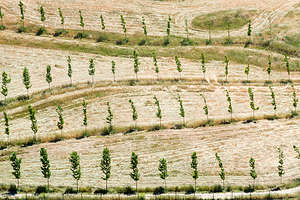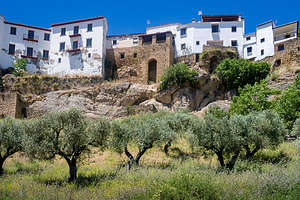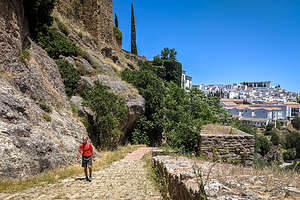- Home
- About
- Map
- Trips
- Bringing Boat West
- Migration West
- Solo Motorcycle Ride
- Final Family XC Trip
- Colorado Rockies
- Graduates' XC Trip
- Yosemite & Nevada
- Colorado & Utah
- Best of Utah
- Southern Loop
- Pacific Northwest
- Northern Loop
- Los Angeles to NYC
- East Coast Trips
- Martha's Vineyard
- 1 Week in Quebec
- Southeast Coast
- NH Backpacking
- Martha's Vineyard
- Canadian Maritimes
- Ocracoke Island
- Edisto Island
- First Landing '02
- Hunting Island '02
- Stowe in Winter
- Hunting Island '01
- Lake Placid
- Chesapeake
- Provincetown
- Hunting Island '00
- Acadia in Winter
- Boston Suburbs
- Niagara Falls
- First Landing '99
- Cape Hatteras
- West Coast Trips
- Burning Man
- Utah Off-Roading
- Maui
- Mojave 4WD Course
- Colorado River Rafting
- Bishop & Death Valley
- Kauai
- Yosemite Fall
- Utah Off-Road
- Lost Coast
- Yosemite Valley
- Arizona and New Mexico
- Pescadero & Capitola
- Bishop & Death Valley
- San Diego, Anza Borrego, Joshua Tree
- Carmel
- Death Valley in Fall
- Yosemite in the Fall
- Pacific Northwest
- Utah Off-Roading
- Southern CA Deserts
- Yosemite & Covid
- Lake Powell Covid
- Eastern Sierra & Covid
- Bishop & Death Valley
- Central & SE Oregon
- Mojave Road
- Eastern Sierra
- Trinity Alps
- Tuolumne Meadows
- Lake Powell Boating
- Eastern Sierra
- Yosemite Winter
- Hawaii
- 4WD Eastern Sierra
- 4WD Death Valley +
- Southern CA Deserts
- Christmas in Tahoe
- Yosemite & Pinnacles
- Totality
- Yosemite & Sierra
- Yosemite Christmas
- Yosemite, San Diego
- Yosemite & North CA
- Seattle to Sierra
- Southwest Deserts
- Yosemite & Sierra
- Pacific Northwest
- Yosemite & South CA
- Pacific Northwest
- Northern California
- Southern Alaska
- Vancouver Island
- International Trips
- Index
- Tips
- Books
- Photos/Videos
- Search
- Contact
Ronda, Spain
Thursday, May 30, 2019 - 8:45pm by Lolo
75 miles and 2 hours from our last stop
Travelogue
 Ronda above the 300-foot deep the El Tajo GorgeNot wanting to waste a precious day in Spain, after being turned away from our scheduled El Caminito del Rey because of high winds, we decided to take a side trip to Ronda, one of Andalusia’s most beautiful white villages, less than an hour away.
Ronda above the 300-foot deep the El Tajo GorgeNot wanting to waste a precious day in Spain, after being turned away from our scheduled El Caminito del Rey because of high winds, we decided to take a side trip to Ronda, one of Andalusia’s most beautiful white villages, less than an hour away.
There are a string of these lovely villages throughout the Andalusia region, painted white because of the scorching summer heat. Ronda is one of its largest and most popular, as we would soon learn.
Ronda’s main attraction is its dramatic setting, set atop the 300-foot deep El Tajo Gorge, which separates the village into two parts - the New Town and the Old Town.
 Ronda's Puente NuevoAlthough our main interest was in exploring the Old Town, we had to park in the New and navigated our way through the crowded streets (much more people than we expected) to the Puente Nuevo, the iconic bridge which connects the new town to the old. Funny how although it was built in 1793, it is still considered the “New” Bridge. Spain, with its millenniums of history, has a different way of viewing time than we do in the much younger United States.
Ronda's Puente NuevoAlthough our main interest was in exploring the Old Town, we had to park in the New and navigated our way through the crowded streets (much more people than we expected) to the Puente Nuevo, the iconic bridge which connects the new town to the old. Funny how although it was built in 1793, it is still considered the “New” Bridge. Spain, with its millenniums of history, has a different way of viewing time than we do in the much younger United States.
After crossing the bridge, we tried to walk down into the gorge, because that is what Rick Steve’s did in the YouTube video we watched, and it looked very cool. However, we were thwarted pretty early on by a locked gate - not exactly sure why.
Still it was interesting wandering around the winding lanes of the old town, which dates back to Islamic times when it was an important cultural center and fortified city filled with mosques and palaces. In its heyday, it was second only to Granada during the last years of Moorish rule in Spain. It fell in 1485, just seven years before Granada.
 Young olive grove in RondaEventually, we crossed back over the Puente Nuevo into the other world of the new town, with its traffic, restaurants, bars, and up-scale shops. The New Town is also home to the Plaza de Toros, the oldest bullring in Spain (built in 1785).
Young olive grove in RondaEventually, we crossed back over the Puente Nuevo into the other world of the new town, with its traffic, restaurants, bars, and up-scale shops. The New Town is also home to the Plaza de Toros, the oldest bullring in Spain (built in 1785).
Funny how most of the crowds stayed on this side of the gorge, although we found the other to be much more picturesque and interesting - all the better for our experience.
Before heading back, we stopped to have a cup of coffee on the terrace of the Hotel Hemingway - where I would like to think he did the same.
Hopefully, tomorrow the wind would cooperate so we could do our hike on El Caminito del Rey.
Description
 Olive grove in the white village of RondaRonda, one of the most beautiful white villages in Andalusia, sits dramatically above the 300-foot deep El Tajo Gorge. The gorge separates, which was carved out by the Rio Guadalevin, separates the city in two.
Olive grove in the white village of RondaRonda, one of the most beautiful white villages in Andalusia, sits dramatically above the 300-foot deep El Tajo Gorge. The gorge separates, which was carved out by the Rio Guadalevin, separates the city in two.
South of the gorge is Ronda’s old town, dating from Islamic times when it was an important cultural center and fortified city filled with mosques and palaces. It was second only to Granada during the last years of Moorish rule in Spain. It fell in 1485, just seven years before Granada.
 Herb wandering through Ronda's Old TownThe new town is perched atop steep cliffs on the northern side of the gorge. This is where you will find most of the visitors enjoying the many restaurants and parks. It is also home to the Plaza de Toros, the oldest bullring in Spain.
Herb wandering through Ronda's Old TownThe new town is perched atop steep cliffs on the northern side of the gorge. This is where you will find most of the visitors enjoying the many restaurants and parks. It is also home to the Plaza de Toros, the oldest bullring in Spain.
Three bridges cross the gorge connecting the old town with the new, the most iconic of which is the Puente Nuevo, built in 1793. Spain’s idea of new is definitely different than in the United States.
- ‹ previous
- 8 of 20
- next ›
Ronda location map in "high definition"
Javascript is required to view this map.
